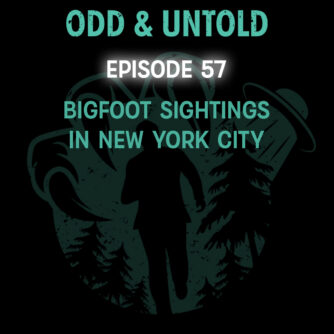At this point, I think a lot of people would say that the show Finding Bigfoot couldn’t sink any lower. So apparently, Matt Moneymaker and his team are looking to do the opposite of sinking: heading into the skies in a hot air balloon in their search for Sasquatch.
The Finding Bigfoot team is always open to new ways of locating their target; this week, a new technique takes the search up above Valles Caldera National Preserve.
Matt Moneymaker, president and founder of the Bigfoot Field Researchers Organization (BFRO), once again leads his team into a bigfoot research opportunity, this time in the Jemez Mountains in New Mexico. According to Animal Planet:
The team travels to the Jemez Mountains in New Mexico to investigate a thermal image video of a possible bigfoot. With sightings in and around the vast Valles Caldera National Park, the team narrows down their search by using a hot air balloon.
Fans will know that using a hot air balloon is yet another attempt by the Finding Bigfoot team to utilize all of the techniques they may have at their disposal, conventional or otherwise. Whatever idea a team member has, if there is the least bit of potential in it, they are all willing to keep an open mind and give it a try—one of the more admirable traits regarding the passion of the team, whether one believes in their quest or not. If they are never able to find the evidence they need, it certainly will not be because of a lack of willingness to try.
Just the Facts
The BFRO indicates on its website that there are numerous undisputed facts regarding the search for bigfoot over the years. These include the following:
- It’s a fact that for more than 400 years people have reported seeing large, hair-covered, man-like animals in the wilderness areas of North America.
- It is a fact that sightings of these animals continue today. Real or not, these reports are often made by people of unimpeachable character.
- It is a fact that, for over seventy years, people have been finding, photographing, and casting sets of very large human-shaped tracks. Most are discovered by chance in remote areas. These tracks continue to be found to this day.
- It is a fact that the cultural histories of many Native American and First Nation peoples include stories and beliefs about non-human “peoples” of the wild. Many of these descriptions bear a striking resemblance to the hairy man-like creatures reported today.
According to the BFRO, the dispute of these facts is not in whether or not they are actual facts, but rather over what they mean. Some believe, as does the BFRO, that the whole of these facts indicate that there is a likely primate living in very low populations, not yet “discovered” and “confirmed” by mainstream science. Others, however, believe that these “facts” simply point to an ongoing cultural phenomenon, which is perpetuated via misidentification, wishful-but-incorrect thinking, and deliberate fabrication of evidence—photos, sightings, footprints, videos, etc.
I don’t think this is a bad idea. Jeff Meldrum and others decided to take to the skies to look for Bigfoot recently as well. But Meldrum is an actual scientist, not a reality TV show star. Still, it’s probably a more efefctive way of finding Bigfoot than setting off fireworks in the woods at night.



